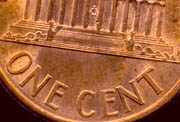 If you read the N.Y.Times in its coverage of the disruption of the Kindle, you might think that publishers are losing a fortune from the sudden rise in Kindle sales.
If you read the N.Y.Times in its coverage of the disruption of the Kindle, you might think that publishers are losing a fortune from the sudden rise in Kindle sales.Actually, the opposite is true. Amazon is buying Kindle rights from publishers at the same price they’re paying for physical books. And Amazon is sticking with its policy to sell Kindle books at no more than $9.99. So take your average $20 list price hardcover book (if I were a shameless self-promoter, I would use my book The Genius Machine as an example, since it also has a list price of $20. But I will resist the temptation.) The publisher sells it to Amazon for 50% off, or $10. Amazon could sell my the book for $20, but they discount it down to $13.57, and make a profit of $3.57, or maybe a little less if Amazon is paying for shipping.
Now take the same book sold as a Kindle. Amazon pays $10 for those rights, too. And Amazon sells the download for $9.99, thereby earning a gross profit of 1¢ on each copy. On books that wholesale for more than $9.99, Amazon seems to be locked into a loss with every sale.
And what about the publisher? On a $20 retail book they get the same $10 for the Kindle edition as they did for the actual hardcover that cost them some $2.00 to manufacture, ship, and even keep a reserve for returns of unsold books. So who is making a killing on the Kindle? The publishers. And Publishers, please, if I’m wrong about these numbers, share the facts with us in the comments below.
Publishers are worried that Amazon will choose to stop losing money on Kindle sales at some point. They are just waiting for that shoe to drop. Hence the cheering for Barnes & Noble’s new reader, Nook. (Nook. Interesting name. Just asking, but what would you call a diminuitive version of the Nook?) Publishers are beyond eager for someone, anyone, to stop Amazon from completely owning ebooks! Now let’s talk about those ten books that Wal-Mart and Target are offering for pre-orders at $8.99 and Amazon at $9.00. These are for hardcover books ranging in list price from Linda Howard’s Ice at $22 all the way up to Stephen King’s 1088 page monster Under the Dome that lists for a mighty $35. What is the meaning, if any, in these door-busting discounts?
Comes now (“Comes now” is a locution reserved for columnists who can’t find a better way to introduce a new character into a story. But I digress.) Motoko “Cassandra” Rich of the N.Y. Times in her “Price War” story in last Saturday’s paper, wherein she worries that Wal-Mart selling some pro-orders for books as a loss-leader will somehow “fundamentally damage the industry and the ability of future authors to write or publish books.” And, once more, end publishing as we know it.
To tell her story, Ms. Rich interviews bestselling author James Patterson, who she was apparently grateful to reach before her deadline, since she quotes him at length no matter how little light he has to shed upon the subject. Frankly, interviewing an author about retail price discounting is akin to interviewing a tuna about the price of a Salade Niçoise.
The fact is, publishers don’t really care what a retailer sells a book for. Retailers want to take a loss? No problem. What everyone needs to be concerned about, though, is when a Wal-Mart or Amazon pressures a publisher to sell at what is known as a “deep-discount.” That should set off alarms for authors and agents, since most author agreements call for author royalties to take a severe hit when the publisher sells at a deep discount. Authors: Read your contracts! Find that “Deep Discount” clause. Does it say something to the effect that when the publisher sells your book for more than a 50% discount, the author royalty suddenly gets cut in half? Think about that. The publisher gives Barnes & Noble an extra 1% discount and you lose half your royalties on every book sold.
The big take-away here is that nine of the ten books being hacked down in price by Amazon, Target and Wal-Mart are fiction titles. Only one calls itself non-fiction. And this is the clue to smart book pricing. Fiction is generally sold as entertainment. Entertainment tends to be more fungible. Non-fiction is generally sold on the value of the information it contains. So pricing the two in the same way seems crazy.
How much would you pay for information that can change your life? Heal a child? Save your business? Is that information worth only $20? Is that all you’d pay for it?
We haven’t begun to touch value pricing for non-fiction. That is the real gold mine just waiting for publishers. We’ll write more about the potential and the theory of value pricing soon. In the meantime, you have to wonder about the one non-fiction title that’s being treated just like all those other nine fiction titles being deep discounted. Yes, it’s Sarah Palin’s memoir. Now, if what she were about to disclose had great value, say information that could, in some way, save the Union, it certainly would be worth a lot. Some of us would pay real money for that kind of knowledge.
But Wal-Mart, Target, and Amazon say we can have it all for just $8.99. Maybe they know something.
Leave a Reply
You must be logged in to post a comment.